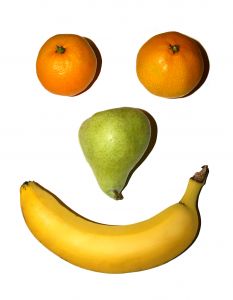January 5th, 2011 by DrCharles in Better Health Network, Health Tips, Opinion, Research
2 Comments »

 A patient reading a copy of Prevention in the waiting room brought to my attention an interesting article entitled “7 Foods That Should Never Cross Your Plate.” I would have to agree that these seven commonly eaten foods should be avoided, so I’ll rehash them here, along with three more of my own choosing to flesh out a New Year’s 7 + 3 = Top 10 list.
A patient reading a copy of Prevention in the waiting room brought to my attention an interesting article entitled “7 Foods That Should Never Cross Your Plate.” I would have to agree that these seven commonly eaten foods should be avoided, so I’ll rehash them here, along with three more of my own choosing to flesh out a New Year’s 7 + 3 = Top 10 list.
The lead into the article implores the reader to recognize that “clean eating means choosing fruits, vegetables, and meats that are raised, grown, and sold with minimal processing.” Michael Pollan, the regarded author of The Omnivores Dilemma and In Defense of Food, puts it even more simply: “Eat food. Not too much. Mostly plants.”
So here are the food items to avoid, in no particular order:
1) Canned Tomatoes – The resin that lines the corners of tin cans usually contains bisphenol-A, a compound found to produce estrogenic effects in the body, linked to heart disease, diabetes, obesity, and possibly neuro-developmental problems like ADHD. Tomatoes get picked on because their acidity increases the leaching of BPA into the food. Perhaps citrus foods and other acidic canned goods would have the same concerns.
2) Corn-Fed Beef – If you’ve ever watched the documentary Food Inc., you’ve probably been disgusted and appalled by the supply chain that brings meat to our tables and fast food restaurants. Bloated cows are being fed corn and soybeans, heavily subsidized crops controlled by Monsanto, to the detriment of their health. Eating their meat passes on the lower nutritional value to us, and perpetuates an immoral system of CAFO’s and cow concentration camps. Grass-fed beef, especially free range, is higher in vitamins, minerals, and has a healthier fat profile (better omega-3 to omega-6 fatty acid ratios). Bison tends to be grass fed, free-range, and of a superior nutritional quality. Eat Wild can help you find local farms that raise animals properly and often need your support. Think of the higher cost returning dividends on your health and as a charitable support of a good cause. Read more »
*This blog post was originally published at The Examining Room of Dr. Charles*
December 14th, 2010 by DrCharles in Better Health Network, Medical Art, True Stories
No Comments »

 I’m diligently writing a detailed note in the patient’s chart as he speaks of his multiple concerns — severe depression, headaches, and dizziness. I’m not making good eye contact. Often this is effective because I can resist the allure of passively following his narrative to its own diagnostic suspicions. Instead I can record his intuitive guesses without persuasion, formulating my own independent ideas even as I value his. Except that as I write in his chart I notice streaks of red blood appearing among the black script. Am I hallucinating? Am I capable of making paper bleed? Am I, the doctor, bleeding?
I’m diligently writing a detailed note in the patient’s chart as he speaks of his multiple concerns — severe depression, headaches, and dizziness. I’m not making good eye contact. Often this is effective because I can resist the allure of passively following his narrative to its own diagnostic suspicions. Instead I can record his intuitive guesses without persuasion, formulating my own independent ideas even as I value his. Except that as I write in his chart I notice streaks of red blood appearing among the black script. Am I hallucinating? Am I capable of making paper bleed? Am I, the doctor, bleeding?
With closer inspection I notice three small cuts on my chapped knuckles and fingers, products of the incessant and obsessive handwashing compelled by modern medicine. We are obliged to wash our hands before and after each patient contact, which leads to about 60 hand washings per day. In the dry winter air this can become punishing to the integrity of the skin barrier.
I apologize to the patient for marring his chart, yet it almost seems symbolic — physician blood spilled upon a script of human affliction. I know I should tear the page out of his chart and write a clean new one, yet the scrawls of black ink and stripes of red blood look like art. It is a poem, punctuated with living iron and crimson flourish. Despite having made poor eye contact in an attempt to distance and strengthen my consideration of his symptoms, ironically I see the commonality of our bleeding.
*This blog post was originally published at The Examining Room of Dr. Charles*
November 14th, 2010 by DrCharles in Better Health Network, Health Policy, News, Opinion
3 Comments »

 When the Republicans took back the House of Representatives [recently], John Boehner, the presumptive new Speaker and current Senator from Ohio, unleashed a “sob heard round the world.” As The New York Times quotes:
When the Republicans took back the House of Representatives [recently], John Boehner, the presumptive new Speaker and current Senator from Ohio, unleashed a “sob heard round the world.” As The New York Times quotes:
“I’ve spent my whole life chasing the American dream,” (Boehner) said, beginning to cry. He swallowed and tried again. But describing all the bad jobs he had once led to near sobbing when he got to the line, “I poured my heart and soul into running a small business.”
Boehner has cried in public many other times, the recent election night being only the largest stage to date. The tears also flow at his annual golf tournament, or while watching a child pledge allegiance to the flag, listening to a Republican colleague speak about his Vietnam War experiences, the unveiling of a statue of Ronald Reagan, while accepting various awards, during a rendition of “America the Beautiful,” etc. Could these tears be signs of major depression? Should melancholy be a disqualification for leadership? Were Clinton’s tears any better? Read more »
*This blog post was originally published at The Examining Room of Dr. Charles*
October 20th, 2010 by DrCharles in Better Health Network, Health Tips, Opinion, Research
No Comments »

 What is in a prenatal vitamin? Why do most doctors recommend them? Is there any evidence taking them is worthwhile? I decided recently that I would read through the ingredients of these vitamins, often touted as “essential vitamins and nutrients, crucial for the healthy development of your baby.” Hmmm. Does that mean eating traces of polyvinyl alcohol every day is beneficial?
What is in a prenatal vitamin? Why do most doctors recommend them? Is there any evidence taking them is worthwhile? I decided recently that I would read through the ingredients of these vitamins, often touted as “essential vitamins and nutrients, crucial for the healthy development of your baby.” Hmmm. Does that mean eating traces of polyvinyl alcohol every day is beneficial?
The fine print ingredients of such brands as “One A Day”, “Centrum Materna”, “Rite Aid” and even the prescription only “Prenate Elite” are a confusing mess of milligrams, international units, RDA’s, and chemicals. As the makers of Centrum explain, “It is very challenging to formulate vitamins and minerals without the use of non-medicinal ingredients which serve to keep the product stable and to prevent the various ingredients from interacting.” They also find fault in the limited number of suppliers of the active ingredients in prenatal vitamins, and therefore claim substances like gelatin are difficult to avoid.
Let’s take a tour of the prenatal vitamin ingredient zoo. Read more »
*This blog post was originally published at The Examining Room of Dr. Charles*
July 31st, 2010 by DrCharles in Better Health Network, Medical Art, True Stories
No Comments »

She coughs
and heaves a breathless goodbye
into the bedside phone.
Her lungs
damp, bloated, sacked honeycomb
wheeze with vanishing bees.
The room
of sensors and startling noise
has not air to float upon.
Morphine
slakes a thirst for breathable sky
and calms the panic within.
The shame
of living, of death smiling,
savoring smoke and ash.
Eyes closed
she imagines her son, boy,
man, precious evermore.
Flowers.
Beautiful white, red, and black
from a husband who waits.
Starstuff
spinning in galaxies far,
with summer lightning bugs.
And then
it is upon her, the moment,
dreaded, practiced, boundless.
We run
through soft sands lit by moonlight,
now tumbling under waves.
All that matters
doesn’t.
And all that happens
matters.
The absence of pain and hunger
the end of struggle and story
mark an indifferent,
yet decent,
finish.
*This blog post was originally published at The Examining Room of Dr. Charles*
 A patient reading a copy of Prevention in the waiting room brought to my attention an interesting article entitled “7 Foods That Should Never Cross Your Plate.” I would have to agree that these seven commonly eaten foods should be avoided, so I’ll rehash them here, along with three more of my own choosing to flesh out a New Year’s 7 + 3 = Top 10 list.
A patient reading a copy of Prevention in the waiting room brought to my attention an interesting article entitled “7 Foods That Should Never Cross Your Plate.” I would have to agree that these seven commonly eaten foods should be avoided, so I’ll rehash them here, along with three more of my own choosing to flesh out a New Year’s 7 + 3 = Top 10 list.













